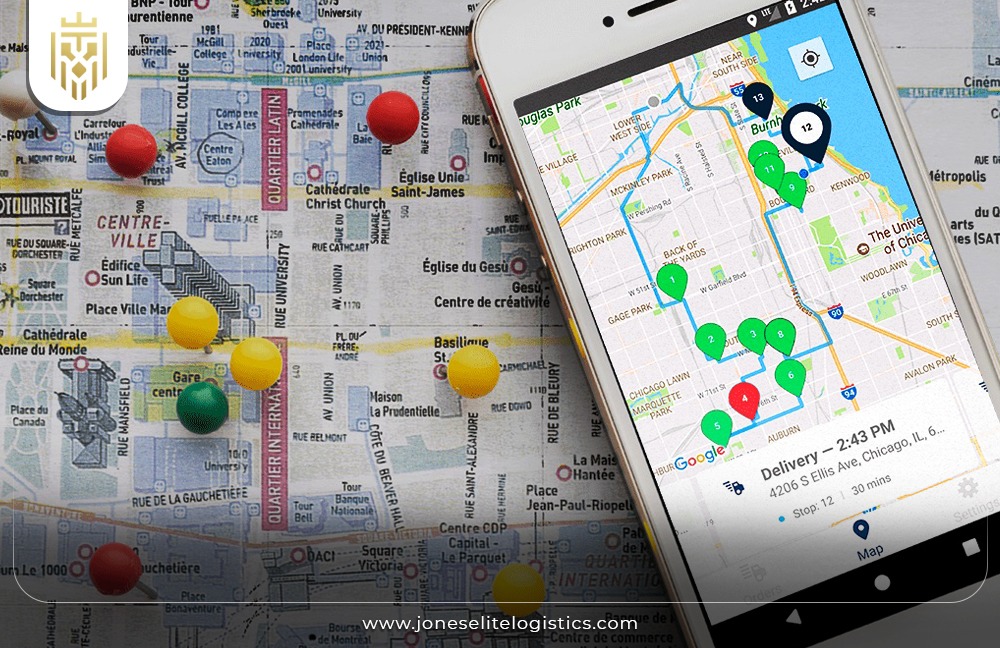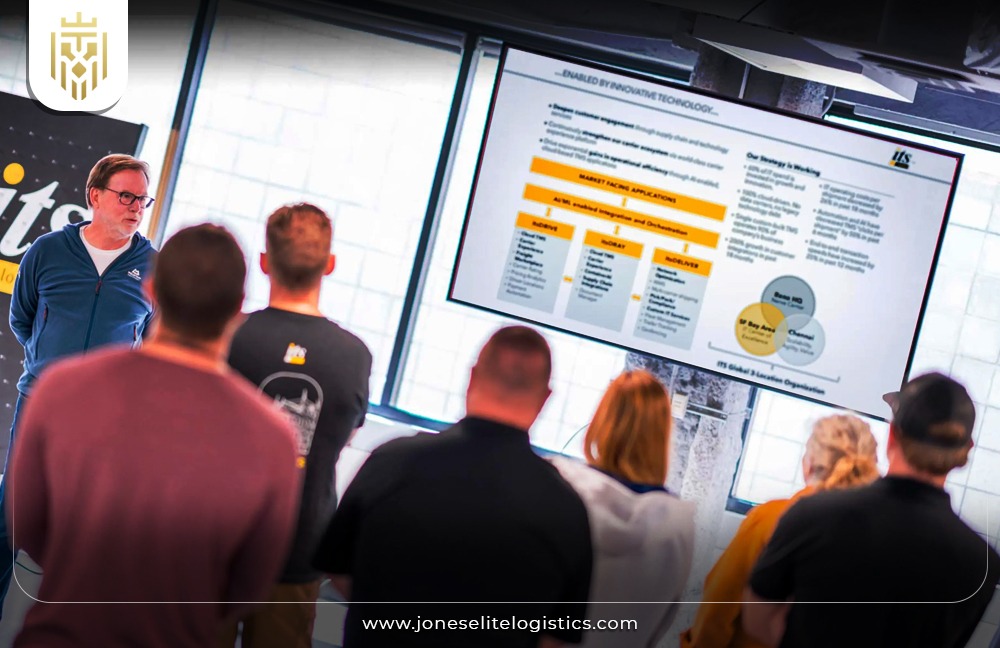What is Route Optimization?
Route optimization involves identifying the optimal delivery route for travel to enhance operational efficiency, reduce costs, fuel usage, and travel time, while improving productivity. Businesses engaged in delivery services, logistics, and supply chain operations find route optimization software indispensable. It simplifies manual delivery route planning and uses advanced algorithms to factor in traffic conditions, delivery schedules, and vehicle capacity. In the case of Indian businesses, a dynamic route optimization helps e-commerce and logistics businesses in addressing traffic patterns and improving timely delivery, hence increases satisfaction among the clients.

How Route Optimization works?
Route optimization software evaluates several factors, such as traffic conditions, delivery time windows, and vehicle capacity, to determine the most efficient delivery route. For instance, in a densely populated Indian city with heavy congestion, a route planner might suggest an optimized route through less crowded roads. Real-time updates, enabled by route optimization APIs, ensure that businesses can adapt to changing conditions. By analyzing historical delivery data and traffic patterns, the software minimizes delays and enhances delivery efficiency.
How does logistics route planning help in last-mile delivery?
Effective delivery route optimization is crucial for last-leg deliveries, which plays a significant role in the delivery of the product. A robust route planning software ensures timely deliveries by identifying the shortest and fastest routes, accommodating traffic patterns and territory-specific challenges. Businesses using intelligent route optimization can boost delivery route planning accuracy, reduce fuel costs, and cultivate customer satisfaction through the efficient delivery window. It helps e-commerce companies and local delivery services to deliver goods to the customer promptly and sustain the market share with the growing e-commerce market in India
How to optimize route planning and load planning?
Businesses can use delivery route optimization tools with real-time data and predictive analytics to streamline their operations. By analyzing past delivery data, companies can develop efficient routes tailored to their unique challenges, such as traffic congestion and delivery windows. Optimizing delivery routes enhances the utility of vehicles by accommodating multiple deliveries without exceeding capacity limits. In India, where diverse traffic conditions prevail, dynamic routing ensures adaptability and efficiency.

Importance of Routing in the supply chain:
Transportation or convoying is one of the cousin functions of supply chain management that focuses mainly and directly on the means of moving products from one point to another. Vehicle route optimization directly impacts delivery times, fuel consumption, and overall expenses. By employing route optimization solutions, businesses in India can navigate challenging terrains and reduce costs, ensuring effective route planning. This fosters timely delivery and builds customer trust, enhancing the supply chain’s planning and competitiveness.
How to choose the best logistics route planning software?
When selecting a logistics route planning software, consider factors like features for optimizing routes, integration with existing systems, and scalability. Businesses should assess their needs, such as multiple routes or compatibility with ERP systems. For Indian companies, the software must handle unique challenges like poor road infrastructure and heavy traffic patterns.
Business Size and Industry:
You need to look at the size of your enterprise and the sector that you belong to when choosing the logistics route planner software to buy. Large organizations need a delivery route optimization software with advanced functionalities, while small firms may benefit from simpler tools. For Indian logistics, scalability is key to handling the growing market and optimizing delivery operations effectively.
Specific needs and requirements:
There are different logistics route planning software in the market and one should first determine their logistics needs and requirements before settling for any software. Select a route optimization solution tailored to your logistics needs, including delivery frequency, vehicle type, and customer expectations. Ensure compatibility with existing systems like ERP and CRM. For Indian businesses, addressing traffic conditions and ensuring efficient route planning are vital for smoother operations.
Scalability and growth potential:
An important criterion in decision-making on the choice of an appropriate route planning software is scalability. Select a choice that will expand the firm and accommodate the rising number of deliveries. In the case of Indian businesses where the growth rate is high, then the software has to be capable of handling the growing business without a decrease in efficiency. Considering factors such as flexibility where it is easy to incorporate new vehicles, new routes, and new service areas. Flexible systems indicate that while your business grows, your distribution processes are not bogged down, thus expanding the firm’s sustainability and market viability.
Integration with existing systems:
Your chosen route optimization API should integrate seamlessly with current logistics systems. Effective integration minimizes manual errors and enhances dynamic route optimization for better decision-making. Indian businesses can benefit significantly by combining these systems to navigate complex traffic patterns and ensure efficient route planning.

Benefits of Route Optimization:
The efficiency of route optimization for businesses is inseparable from its advantages, of which logistics and delivery are the most significant. Cuts operational costs since it can identify the best routes and hence cuts travelling time and fuel costs. This makes it possible to reduce the managerial costs of an organization as well as cut other operating expenses. The improvement of routes helps a business to deliver goods and services on time thus improving satisfaction.
Improved Efficiency:
Route optimization software determines the most efficient route by analyzing factors like traffic conditions, delivery schedules, and vehicle capacity. This reduces fuel consumption and ensures on-time deliveries, crucial for Indian businesses navigating congested urban areas and diverse terrains. Optimizing routes enhances overall operational performance.

Cost Savings:
The first of these is the potential for major cost savings, which is one of the goals of improving routes. One of the largest transport costs can be excluded with just driving on optimized routes. This also tends to extend vehicle lifetime and reduce the costs of maintaining vehicles by reducing the mileage on them. A delivery route optimization software minimizes overtime costs during delivery services. To the logistics and delivery companies, such savings result in enhanced profit margins. It offers a high return on investment because route optimization software is cost-effective in the long run.
Scalability:
Another strength of the route optimization process is to do with scalability. Typically, an intelligent delivery route optimization software is scalable, meaning that as your business increases the volume of deliveries and the areas in which it operates, the software can grow right along with it. The nature of business growth in India is such that a variety of ventures tends to grow on a large scale, making it possible to maintain optimal logistic solutions. The optimization software can take care of more vehicles, routes, and the number of customers without the degrees of slowness. This flexibility enables businesses to grow operationally and accessorize while ensuring a high level of service delivery
Enhanced Customer Service:
By employing advanced delivery route optimization tools, businesses can meet customer expectations for timely deliveries. In India, reliable delivery windows built on dynamic route planning foster customer satisfaction and loyalty. Real-time updates further enhance transparency, ensuring that customers remain informed throughout the last-mile delivery process.

Flexibility and adaptability:
Optimization of routes is also flexible as well as scalable which enables businesses to turn their operations with great ease. Dynamic routing adapts to real-time changes like roadblocks, traffic updates, or delivery modifications. This flexibility ensures minimal disruptions during deliveries in India’s unpredictable urban and rural landscapes. By implementing route optimization solutions, it is possible to recalculate the best routes while en route thereby causing very little interruption and solving vehicle routing problem. This flexibility proves beneficial in sustaining a company’s service levels in times of uncertainty.
Challenges of Route Optimization:
Route optimization has certain drawbacks that should be taken into consideration: Real-Time Tracking, Fleet Constraints, Data Accuracy and Updates, Dependency on Technology, and Initial Investment.
Real Time Tracking:
Accurate delivery route planning requires stable real-time tracking, which is challenging in India’s rural areas with poor network coverage. Delays in updating traffic conditions or GPS inaccuracies can hinder route efficiency. Reliable infrastructure is essential for seamless operations and maintaining last-mile delivery schedules.
Fleet Constraints:
Limited vehicle availability, varying capacities, and maintenance issues complicate vehicle route optimization. In India, where logistics operations use diverse fleets, distributing loads across multiple routes becomes a challenge. Effective route planning software can address these constraints to maximize delivery efficiency.
Data Accuracy and Updates:
Inaccurate or outdated data affects dynamic routing and leads to inefficiencies. Indian businesses need precise information on traffic patterns, road closures, and delivery schedules for successful optimization software implementation. A robust system for real-time updates ensures accurate plan routes and reduces delays.

Dependency on technology:
Indian businesses relying on route optimization software face risks of technical glitches and connectivity issues. Software downtime can disrupt manual route planning, affecting deliveries. Proper training and cybersecurity measures are essential to safeguard operations while leveraging advanced algorithms for dynamic route optimization.
Initial Investment:
The cost of implementing sophisticated optimization software may deter businesses, especially SMEs. Indian firms need to balance these initial expenses with long-term benefits like enhanced operational efficiency and cost savings. Training employees and integrating systems can add to the investment but ensures higher returns through efficient routes.
How can Jones Elite Logistics assist in route optimization?
Jones Elite Logistics has the capability of helping in route optimization through the offering of enhanced technologies and B2B services. They provide advanced software for route planning by actual time data and precise calculations that show the best routes. It also blends with the existing logistics operations hence facilitating implementation of the system. Jones Elite Logistics also offers constant services, which include training and assists businesses to embrace change especially when it comes to technology. Some of them include parties such as; fleet limitation and data accuracy are well handled by the provision of the solutions. To Indian businesses, the efficiency of their algorithms can lead to better operational performance, lower costs, and satisfied customers via better routing plans.
FAQs
1) What is Route Optimization in logistics?
Route optimization involves identifying the optimal delivery route for travel to enhance operational efficiency, reduce costs, fuel usage, and travel time, while improving productivity.
2) What are the challenges of route optimization in logistics?
Route optimization has certain drawbacks that should be taken into consideration: Real-Time Tracking, Fleet Constraints, Data Accuracy and Updates, Dependency on Technology, and Initial Investment.
3) What is the importance of routing in the supply chain?
Vehicle route optimization directly impacts delivery times, fuel consumption, and overall expenses. By employing route optimization solutions, businesses in India can navigate challenging terrains and reduce costs, ensuring effective route planning. This fosters timely delivery and builds customer trust, enhancing the supply chain’s reliability and competitiveness.







